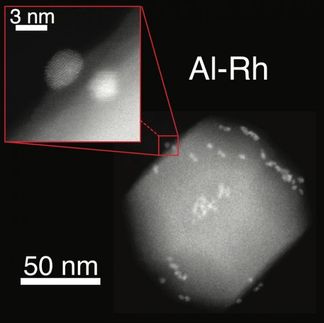Newly detected air pollutant mimics damaging effects of cigarette smoke
Persistent free radicals, a newly discovered air pollutant, could have effects similar to cigarette smoke, Louisiana researchers say.
Advertisement
A previously unrecognized group of air pollutants could have effects remarkably similar to harmful substances found in tobacco smoke, Louisiana scientists are reporting in a study scheduled for presentation at the 236th National Meeting of the American Chemical Society. Inhaling those pollutants exposes the average person up to 300 times more free radicals daily than from smoking one cigarette, they added. The discovery could help explain the long-standing medical mystery of why non-smokers develop tobacco-related diseases like lung cancer, said H. Barry Dellinger, Ph.D., the Patrick F. Taylor Chair of environmental chemistry at Louisiana State University in Baton Rouge.
"Free radicals from tobacco smoke have long been suspected of having extremely harmful effects on the body," Dellinger said. "Based on our work, we now know that free radicals similar to those in cigarettes are also found in airborne fine particles and potentially can cause many of the same life-threatening conditions. This is a staggering, but not unbelievable result, when one considers all of diseases in the world that cannot currently be attributed to a specific origin."
Most of these previously identified atmospheric free radicals form as gases, exist for less than one second, and disappear. In contrast, the newly detected molecules — which Dellinger terms persistent free radicals (PFRs) — form on airborne nanoparticles and other fine particle residues as gases cool in smokestacks, automotive exhaust pipes and household chimneys. Particles that contain metals, such as copper and iron, are the most likely to persist, he said. Unlike other atmospheric free radicals, PFRs can linger in the air and travel great distances.
"You basically have to be in certain places to inhale transient gas-phase radicals," Dellinger said. "You'd have to be right next to a road when a car passes, for example. Whereas we found that persistent radicals can last indefinitely on airborne fine particles. So you're never going to get away from them."
Once PFRs are inhaled, Dellinger suspects they are absorbed into the lungs and other tissues where they contribute to DNA and other cellular damage. Epidemiological studies suggest that more than 500,000 Americans die each year from cardiopulmonary disease linked to breathing fine particle air pollution, he says.
Other news from the department science

Get the chemical industry in your inbox
By submitting this form you agree that LUMITOS AG will send you the newsletter(s) selected above by email. Your data will not be passed on to third parties. Your data will be stored and processed in accordance with our data protection regulations. LUMITOS may contact you by email for the purpose of advertising or market and opinion surveys. You can revoke your consent at any time without giving reasons to LUMITOS AG, Ernst-Augustin-Str. 2, 12489 Berlin, Germany or by e-mail at revoke@lumitos.com with effect for the future. In addition, each email contains a link to unsubscribe from the corresponding newsletter.





























































